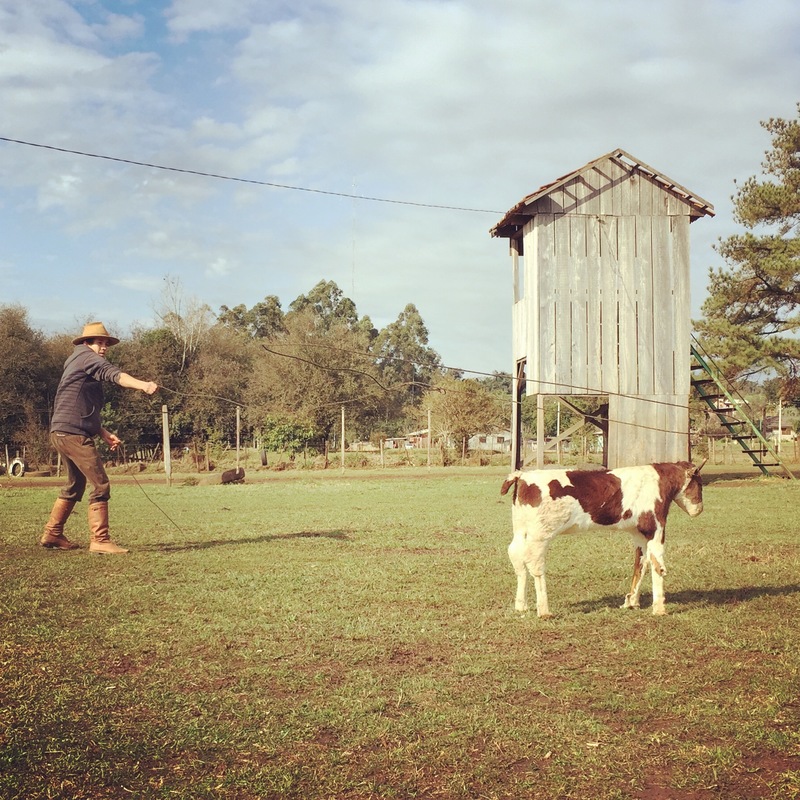The First no always hurts the most.
After having to saddle up the mares and leave the church where I thought I would camp, I managed to find a soccer field to spend the night. The next afternoon we arrived in Santa Rosa sore and tired.
Friends from Tenente Portela put me in touch with a couple of Long Ropers in the city and they were awaiting our arrival. Just after 6pm we rode into a ranch on the outskirts of the city. Several Gauchos sat around a roping dummy practicing their sport and drinking warm mate.

“Welcome to Santa Rosa,” one of the Gauchos yelled out while I stepped down from Life’s back.
I said hello to everyone and untacked the girls. Before they were done eating their feed, I was already roping the dummy and chatting with my new friends.
Cold beers were bought and a large amount of meat was put on the fire. We spent the late afternoon eating, drinking and getting to know one another. The meat here in Rio Grande do Sul is taken off the lance, cooked, and placed right on top of the table. Everyone uses the knife they carry on their belt to cut the piece they wish to eat. Plates and forks are nonexistent.

“Filipe this is a poem that describes the life of a Gaucho working in a ranch,” one of my new friends said before reading the poem with much conviction.
Here in the state of Rio Grande do Sul, rich with culture, it’s very common for someone to start reciting a poem in the middle of a BBQ. Everyone I have met knows one or many poems by memory and acts them out with much elegance and vigour. Its quite beautiful! I have to say, that this is the first time in my life I have been in a place where grown men recite poetry at the drop of a hat.
At the end of the night, Ivan Carvalho, a small man with a huge heart, took us to sleep at his family’s house.
“While you stay here in Santa Rosa, this is your home,” he said as we entered his beautiful house.

The next morning after feeding the mares, Ivan took us to the CTG (Centre of Gaucho Tradition) to watch a dance competition. Boys and girls from all over the state wore the traditional Gaucho attire consisting of a large black hat, bombachas (pants), ponchos and leather boots for he boys and colourful long dresses for the ladies matched with extravagant hairdos.
They danced to traditional Gaucho songs as judges sitting on a wooden stage scored them on different categories.
“Our culture is rich with poetry, dancing, music, and horses. From very young, we are completely engulfed in this world,” Ivan told me over the loud music.
